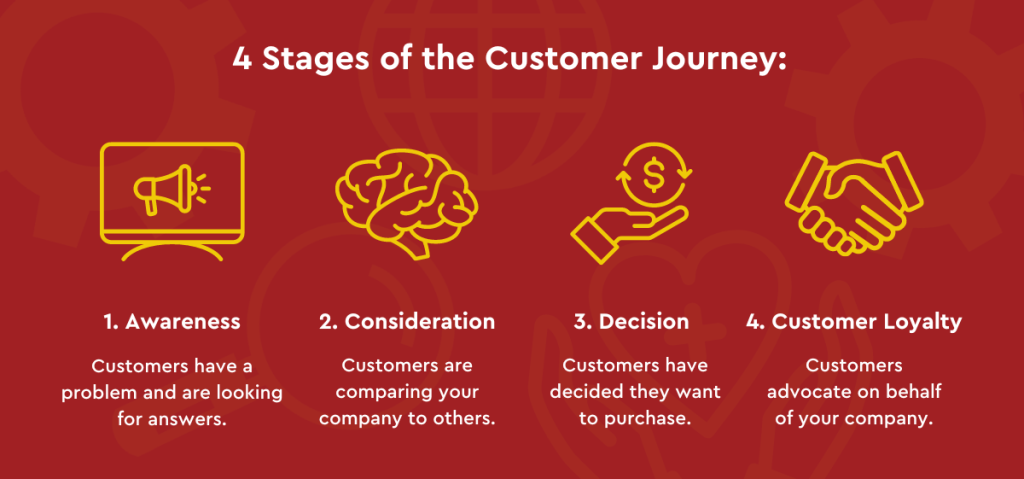The Customer Journey: Marketing’s Road Map to Success
It’s no secret that marketing is all about the customer. After all, without customers, businesses would obviously cease to exist. So it’s important for marketers to understand the customer journey in order to create targeted marketing materials that address the questions and pain points of buyer personas at their specific stage in the customer journey.
SEE MORE: Buyer Personas Based on Your Customer Journey Will Dramatically Improve Marketing Performance
But before we jump into the 4 stages of the customer journey, it should be noted that there is a difference between customer journey and customer experience. These two terms are often confused to mean the same thing when, in fact, the customer experience is more about the perception and feelings a customer may have about a brand whilst interacting with them. Whereas, the customer journey centers on the sales funnel, describing the path that customers take from their first interactions with a company to the point of purchase and beyond.
What are the customer journey stages?
There are typically four stages of the customer journey: awareness, consideration, decision, and loyalty. Each stage has its own set of challenges and opportunities for marketers.

1) The Awareness Stage
The first stage of the customer journey is awareness. In this stage, customers have a problem or a need and are looking for answers. They are just becoming aware of the existence of your company and its products or services. They may not even know what it is that you offer exactly. But if you can help educate customers through addressing their initial questions and pain points, you can simultaneously start to educate a prospective customer about your business and its offerings.
SEE MORE: 10 Steps to Your Best Healthcare Content Marketing Plan
2) The Consideration Stage
The second stage is the consideration stage. Here, customers are considering your company against others with similar products or services. At this point, a potential customer wants a deeper understanding of your offerings, and they want proof points for why you’re the better choice. Blog posts, case studies, and nurturing campaigns are critical at this customer touchpoint.
3) The Decision Stage
The third stage of the customer journey is the decision. In this stage, customers have decided that they want to purchase your product or service. This is where you need to make it as easy as possible for them to do so. This may mean having a well-designed and user-friendly website, providing clear pricing information, and offering multiple payment options.
4) Customer Loyalty
The fourth stage is all about loyalty. Creating a loyal customer who advocates on behalf of your company and its products or services is invaluable. Every time your business converts a lead into a customer, there should be continued focus on their engagement after the sale is over. This can be achieved through great customer service, ongoing offers, rewards and recognition, as well as valuable content.
The Road Map to Success
So why is it important for marketers to understand the customer journey? Well, simply put, it’s the road map to success. If you know where your customers are in their buyer journey, you can tailor your marketing materials to speak to them in a way that resonates. You can also use this information to determine which channels are most effective for reach and engagement.
The customer journey is a foundational concept in marketing, and it’s one that every marketer should understand. By understanding the four stages of the journey and the challenges and opportunities each one presents, you can create a marketing strategy that will help you achieve success.
Main Glossary Page